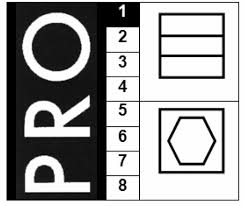Industrial laundry
The industrial cleaning of protective clothing is very different from domestic or small commercial cleaning. The scale, the use of special washing and drying equipment and the use of special detergents all have a different effect on clothing and textiles.
The effects which occur as a result of the cleaning are dependent on the type of clothing, the fabric composition and the selected washing and drying process.
For different types of protective clothing, the following remarks are important but always follow the cleaning instructions of the manufacturer.
Clothing made from predominantly cotton
In many cases protective clothing are flame retardant products e.g. comply with EN ISO 11611 or 11612. These predominantly cotton clothing features a washable flame resistant finish.
In general, for the washing and drying of clothing made from predominantly cotton, the following applies:
- Do not "over dry" the clothing. This may lead to excessive shrinkage.
- The maximum number of washes is sometimes indicated in the care label and or the user instruction. If this is not specified then the clothing is tested to five times washing In practice the clothing will last longer but this must be sought from the supplier or manufacturer.
High visibility clothing
Protective clothing that complies with EN ISO 20471 has fluorescent fabric and retroreflective stiping. In general, for the washing and drying of these garments the following applies:
- Do not wash together with other (dark) coloured garments due to potential colour bleeding on the fluorescent colour.
- Never bleach or wash with white wash detergents (containing optical white).
- Irremovable soilling can reduce visibility.
- Excessive mechanical washing action can promote wear of the retroreflective striping.
Protective clothing against splashes of liquid chemicals
This clothing is usually characterized by that the protective properties are obtained by applying a fluorcarbon finish. These finishes are in some extent washable. Nevertheless, it is advisable to restore the finish after every washing cycle.
In general, for the washing and drying of this type of clothing the following applies:
- Use for washing an anionic detergent. (Non-ionic detergents have better washing action but are more difficult to remove in the rinsing process. Not removed detergent impede the water repellency action).
- After each washing cycle, apply a suitable fluorcarbon product to restore the repellency.
- Dry at sufficiently high temperature to activate the fluorcarbon finish but avoid excessive shrinkage.
- Check the effectiveness of the post-treatment at regular intervals.
Parkas and other multi-layer clothing
Characteristic for this type of garment is that they often contain a water vapour-permeable layer. However, this layer is also watertight and provided with tape on the seams.
This kind of clothing can be washed best in an open-end machine where special attention is needed to the dewatering (spin drying). This must be done in a way that this layer will not be damaged.
Multinorm clothing
Because multinorm clothing combines many of the above-mentioned types, to determine the most suitable industrial laundry process, all of the above mentioned recommendations will apply.
Labelling regarding the industrial laundry and drying of workwear and protective wear
ISO 30023 shows how industrial washable clothing can be labeled so that it is clear to the industrial laundry what washing and drying process is applicable.

The numbers 1 to 8 represent the number of the washing and drying procedures as specified in ISO 15797.
Furthermore, two symbols can be used which indicate whether the clothing can be dried in a tunnel finisher, or a drum dryer. If not applicable, this symbol is omitted from the label.